#just trying to check if coriolanus first appeared in the first folio
Text
i think google is very confused
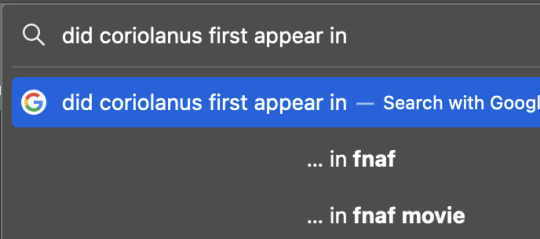
#freddie.txt#just trying to check if coriolanus first appeared in the first folio#for no real reason other than the oed dating the play to c.1616#coriolanus#shakespeare
27 notes
·
View notes
Text
Iain Glen nailing Hamlet (1991)
In 1991, after winning the Evening Standard Film Award for Best Actor, Iain Glen gave his soulful all, not on the stage in London, no, not yet, though really he could have, but at the Old Vic in Bristol, donning the persona of the Dane, Hamlet. He won the Special Commendation Ian Charleson Award* for his performance and yet it appears we will never see but stills from this production as no video recording was made, not even by and for the company. The University of Bristol has the archives of the production: the playbook, the programme and black and white stills. The V&A archives have the administrative papers. In our day and age, this sad evanescent corporeal sate of affairs is unimaginable. The memory of the play, of this performance fading away? We rebel against the very thought. We brandish our cell phones and swear we shall unearth and pirate its memory, somehow, somewhere. Even if we have to hypnotize patrons or pull out the very hearts of those who saw Iain Glen on stage, those few, those happy few, to read into their very memory and pulsating membrane just how brilliant he was. Because he was, he was. That’s what they’ll all tell you...
Below, those pics and testimonies....
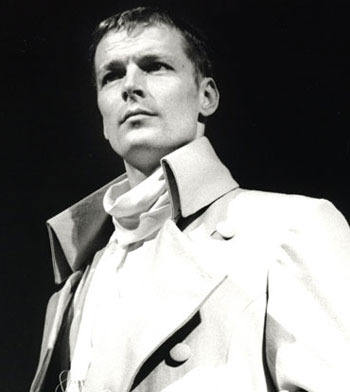
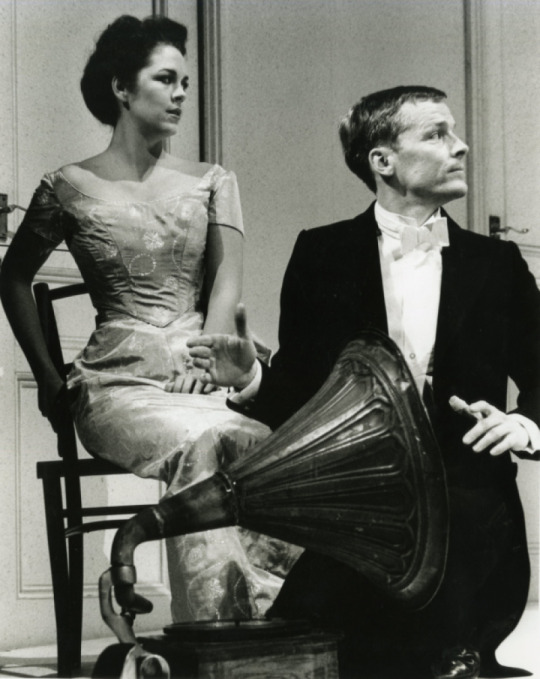




*(The Charleson Awards were established in memory of Ian Charleson, who died at 40 from Aids while playing Hamlet at the National Theatre in 1989)
- Iain Glen is a rampaging prince, quixotic, technically sound, tense as a coiled spring, funny. ‘To be, or not to be’ results from throwing himself against the white walls, an air of trembling unpredictability is beautifully conveyed throughout. ‘Oh, what a rogue and peasants slave’ is blindingly powerful. My life is drawn in angrily modern post Gielgud Hamlets: David Warner, Nicol Williams, Visotsky, Jonathon Price. Iain Glen is equal to them. He keeps good company. THE OBSERVER, Michael Coveney
- Paul Unwin’s riveting production reminded me more strongly than any I have ever seen that the Danish Court is riddled with secrecy. Politics is a form of hide and seek: everyone stealthily watches everyone else. Iain Glen’s Hamlet is a melancholic in the clinical sense: his impeccable breeding and essential good nature keep in check what might be an approaching breakdown. His vitriolic humour acts as a safety valve for a nagging instability, his boyish charm is deployed to placate and deceive a hostile and watchful world. Glen brings out Hamlet’s fatal self absorption: the way he cannot help observing himself and putting a moral price tag on every action and failure. He is a doomed boy. And his chill but touching calm at the end is that of a man who has finally understood the secrets behind the closed doors. The Sunday Times, John Peter
- This is an excellent production of Hamlet from the Bristol Old Vic. The director Paul Unwin and his designer Bunnie Christie have set the play in turn of the century Europe. Elsinore is a palace of claustrophobically white walls and numerous doors. All this is handled with a light touch, without drawing attention away from the play. Our first encounter with Hamlet shows him bottled up with rage and grief. Glen gives a gripping performance. The self-dramatising side of the character is tapped to the full by this talented actor. The Spectator, Christopher Edwards
**************************************************************************************************
The following though is my favorite review/article because it situates Iain Glen’s creation is time, in the spectrum of all renowned Hamlets.
How will Cumberbatch, TV’s Sherlock, solve the great mystery of Hamlet? by Michael Coveney - Aug 17, 2015
In 1987, three years before he died, the critic and venerable Shakespearean JC Trewin published a book of personal experience and reminiscence: Five and Eighty Hamlets. I’m thinking of supplying a second volume, under my own name, called Six and Fifty Hamlets, for that will be my total once Benedict Cumberbatch has opened at the Barbican.
There’s a JC and MC overlap of about 15 years: Trewin was a big fan of Derek Jacobi’s logical and graceful prince in 1977 and ended with less enthusiastic remarks about “the probing intelligence” of Michael Pennington in 1980 (both Jacobi and Pennington were 37 when they played the role; Cumberbatch is 39) and emotional pitch and distraction of Roger Rees in 1984 (post-Nickleby, Rees was 40, but an electric eel and ever-youthful).
I started as a reviewer in 1972 with three Hamlets on the trot: the outrageous Charles Marowitz collage, which treats Hamlet as a creep and Ophelia as a demented tart, and makes exemplary, equally unattractive polar opposites of Laertes and Fortinbras; a noble, stately Keith Michell (with a frantic Polonius by Ron Moody) at the Bankside Globe, Sam Wanamaker’s early draft of the Shakespearean replica; and a 90-minute gymnastic exercise performed by a cast of eight in identical chain mail and black breeches at the Arts Theatre.
This gives an idea of how alterable and adaptable Hamlet has been, and continues to be. There are contestable readings between the Folios, any number of possible cuts, and there is no end of choice in emphasis. Trewin once wrote a programme note for a student production directed by Jonathan Miller in which he said that the first scene on the battlements (“Who’s there?”) was the most exciting in world drama; the scene was cut.
And as Steven Berkoff pointed out in his appropriately immodestly titled book I Am Hamlet (1989), Hamlet doesn’t exist in the way Macbeth, or Coriolanus, exists; when you play Hamlet, he becomes you, not the other way round. Hamlet, said Hazlitt, is as real as our own thoughts.
Which is why my three favourite Hamlets are all so different from each other, and attractive because of the personality of the actor who’s provided the mould for the Hamlet jelly: my first, pre-critical-days Hamlet, David Warner (1965) at the Royal Shakespeare Company, was a lank and indolently charismatic student in a long red scarf, exact contemporary of David Halliwell’s Malcolm Scrawdyke, and two years before students were literally revolting in Paris and London; then Alan Cumming (1993) with English Touring Theatre, notably quick, mercurial and very funny, with a detachable doublet and hose, black Lycra pants and bovver boots, definitely (then) the glass of fashion, a graceful gender-bender like Brett Anderson of indie band Suede; and, at last, Michael Sheen (2011) at the Young Vic, a vivid and overreaching fantasist in a psychiatric institution (“Denmark’s a prison”), where every actor “plays” his part.
These three actors – Warner, Cumming, Sheen – occupy what might be termed the radical, alternative tradition of Hamlets, whereas the authoritative, graceful nobility of Jacobi belongs to the Forbes Robertson/John Gielgud line of high-ranking top drawer ‘star’ turns, a dying species and last represented, sourly but magnificently, by Ralph Fiennes (1995) in the gilded popular palace of the Hackney Empire. Fiennes, like Cumberbatch, has the sort of voice you might expect a non-radical, traditional Hamlet to possess.
But if you listen to Gielgud on tape, you soon realise he wasn’t ‘old school’ at all. He must have been as modern, at the time, as Noel Coward. Gielgud is never ‘intoned’ or overtly posh, he’s quicksilver, supple, intellectually alert. I saw him deliver the “Oh what a rogue and peasant slave” soliloquy on the night the National left the Old Vic (February 28, 1976); he had played the role more than 500 times, and not for 37 years, but it was as fresh, brilliant and compelling as if he had been making it up on the spot.
Ben Kingsley, too, in 1975, was a fiercely intelligent Royal Shakespeare Company Hamlet, and I saw much of that physical and mental power in David Tennant’s, also for the RSC in 2008, with an added pinch of mischief and irony. There’s another tradition, too, of angry Hamlets: Nicol Williamson in 1969, a scowling, ferocious demon; Jonathan Pryce at the Royal Court in 1980, possessed by the ghost of his father and spewing his lines, too, before finding Yorick’s skull in a cabinet of bones, an ossuary of Osrics; and a sourpuss Christopher Ecclestone (2002), spiritually constipated, moody as a moose with a migraine, at the West Yorkshire Playhouse.
One Hamlet who had a little of all these different attributes – funny, quixotic, powerful, unhappy, clever and genuinely heroic – was Iain Glen (1991) at the Bristol Old Vic, and I can imagine Cumberbatch developing along similar lines. He, like so many modern Hamlets, is pushing 40 – as was Jude Law (2009), hoary-voiced in the West End – yet when Trevor Nunn cast Ben Whishaw (2004) straight from RADA, aged 23, petulant and precocious, at the Old Vic, he looked like a 16-year-old, and too young for what he was saying. It’s like the reverse of King Lear, where you have to be younger to play older with any truth or vigour.
Michael Billington’s top Hamlet remains Michael Redgrave, aged 50, in 1958, as he recounts in his brilliant new book, The 101 Greatest Plays (seven of the 101 are by Shakespeare); Hamlet, he says, more than any other play, alters according to time as well as place.
So, Yuri Lyubimov’s great Cold War Hamlet, the prince played by the dissident poet Vladimir Visotsky, was primarily about surveillance, the action played on either side of an endlessly moving hessian and woollen wall. And in Belgrade in 1980, shortly after the death of Tito, the play became a statement of anxiety about the succession.
There’s a mystery to Hamlet that not even Sherlock Holmes could solve, though Cumberbatch will no doubt try his darndest – even if he finds his Watson at the Barbican (Leo Bill is playing Horatio) more of a hindrance than a help; there are, after all, more things in heaven and earth than are dreamt of in his friend’s philosophy.
*************************************************************************************************
Oh! Did I say that we were never going to see Iain Glen in the skin of the great Dane? Tsk. How silly of me. Meet IG’s Hamlet in Tom Stoppard’s postmodern theatrical whimsy ROSENCRANTZ AND GUILDENSTERN ARE DEAD, shot the year before the Bristol play.
Though almost surreal and most often funny as the film follows the Pulp Fiction-like misadventures of two forgettable Shakespearian characters, crossing paths with other more or less fortunate characters, their time with Hamlet makes us privy to the Dane as we never quite see him in the Bard’s play... but for one memorable scene, in which Iain Glen absolutely nails it, emoting the famous “To be or not to be” which you see tortures his soul, brings tears to his eyes and contorts his mouth; the moment made all the more memorable by the fact that it is a silent scene. You never hear him utter the famous line, but you see the words leave his lips and feel them mark your soul.
I’m kinda telling myself that it’s 1991 and I’m sitting in the Old Vic, in Bristol, not London. Not yet.
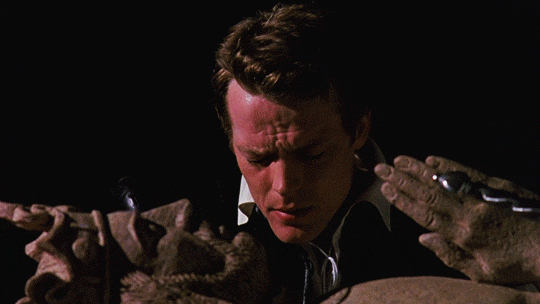
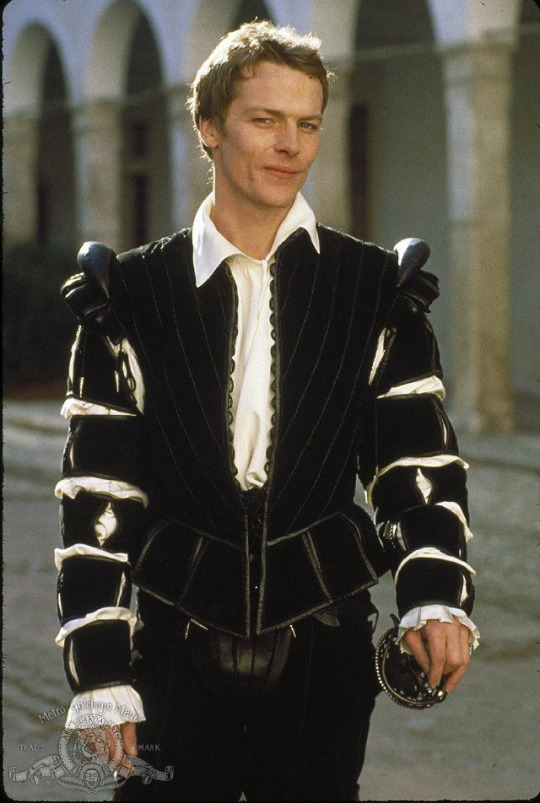



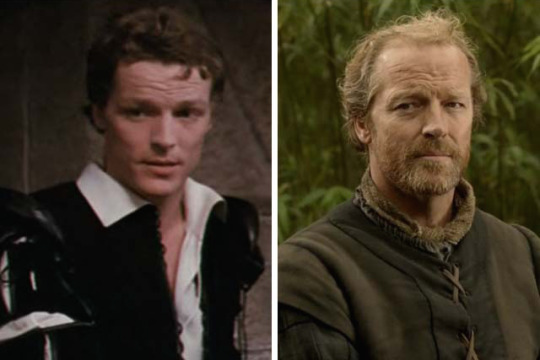
36 notes
·
View notes